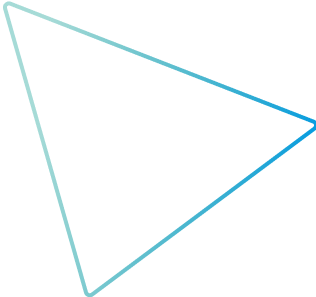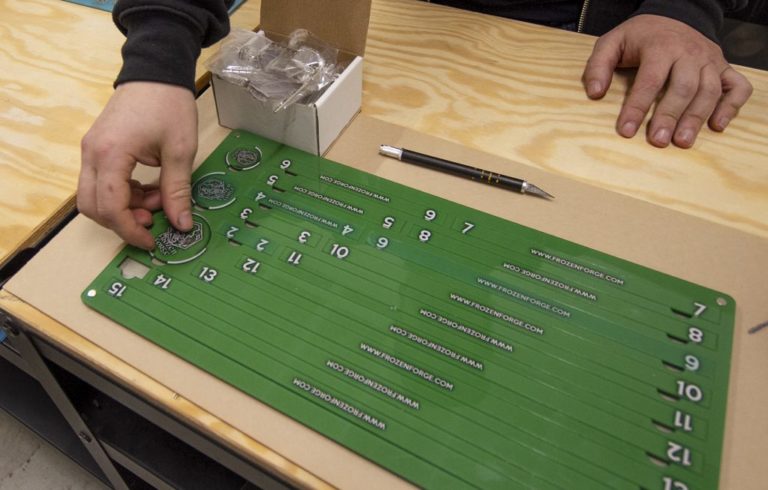After a decade of using Canon Arizona printers, FlexiPrint has succeeded in extending their business beyond traditional screen printing
Skilled craftsmanship
It is easy to be impressed by real craftsmanship. And this is something that is clearly evident in the production facilities of FlexiPrint, in the Norwegian city of Drammen. When we arrive, the screen printer is mixing the brown by hand, while the visual artist checks the result against the pantone fan deck. And 3D-printed figures are being decorated with a brush before being sent to gaming enthusiasts. The flatbed printer, cutting table and CNC machine are also in full operation in this this busy company on the banks of the beautiful Drammenselva river. Henrik Lunda makes no secret of the fact that it has taken many long days to get this far since he and Bjørn Erik Masovn took over the company in 2007.
“It’s been a lot of work,” Hendrik is keen to point out. “But, at the same time, we’re seeing that our efforts are paying off. This year, we increased turnover by more than one million Norwegian kroner (NOK) compared to last year’s 5.4 million NOK. Our traditional areas remain fairly stable, but it is first and foremost our Canon investments that are contributing to growth, he sums up.”
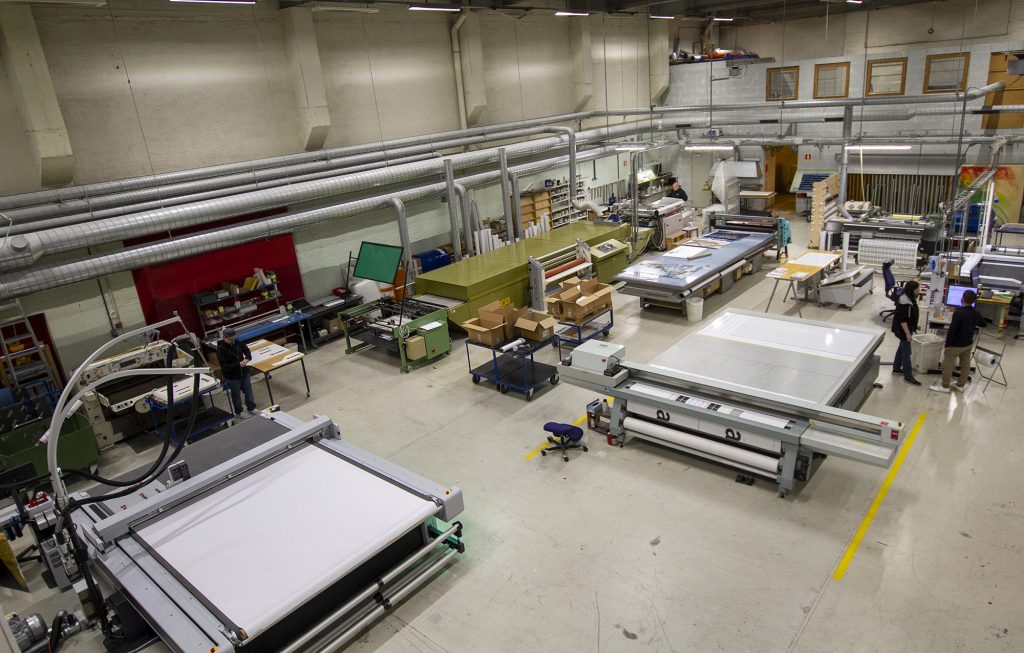
The six-strong workforce enjoy a pleasant and efficient working environment, with a short distance between the Arizona flatbed printer and the cutting table
Fast and efficient
FlexiPrint began in investing in the Arizona flatbed printer in 2010. The company uses the flatbed technology for printing directly on signs, industrial components and works of art. The installation was updated to the Canon Arizona XT 660 in 2018 and a new Zund G3 cutting table was added in 2021. These upgrades to production are creating new growth opportunities for the company’s six employees. During the COVID pandemic, FlexiPrint’s industrial customers such as Tomra, Honeywell and Kongsberg Gruppen were relatively unaffected, so there was no shortage in demand for industrial graphics assignments.
“We invested in this technology to transition away from the screen-printing focus of our operation, which had been the mainstay of the company for many years,” Hendrik explains. “This shift in our business has definitely had a positive effect on the company: the high print speed on a large range of materials, in combination with a short changeover time, is enabling us to handle even small assignments profitably. In addition, we’re seeing that our focus on producing for industrial companies, rather than more market- and campaign-oriented printing jobs has made us less vulnerable to fluctuations. That’s why we’ve not experienced any losses or collapse in orders during the pandemic,” he add, as he continues to feed the Arizona with new polypropylene sheets that are quickly transformed into informative signs for the tool supplier, Würth.
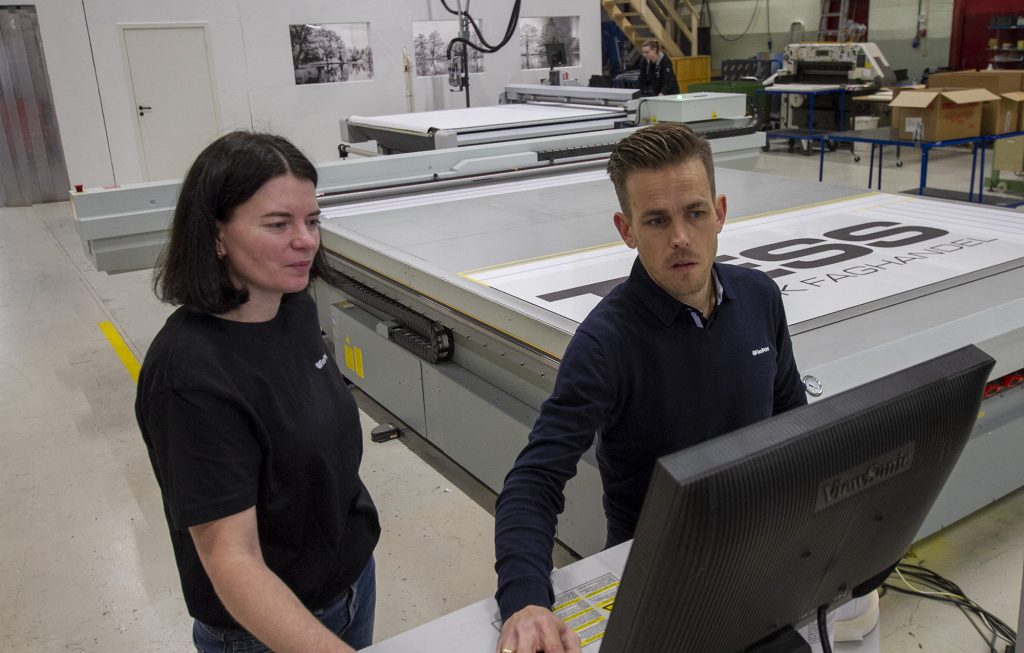
Ten years of Arizona technology from Canon have brought growth and a large proportion of FlexiPrint’s print jobs are now industry-related
Printer for industry
Can you tell us a bit more about your industrial production operation? What are you printing on?
Henrik: “Tomra is a good example: For many years, we printed silk-screened polycarbonate decals for the fronts of their pawn shops. We’re now doing this more efficiently and better using a combination of the Arizona and screen printing.”
“Also, for Kongsberg Gruppen, where we produce industrial markings such as front foils, and print directly on machined and coated products. This type of graphics production places high demands on precision and competence, so we’re proud to be a preferred supplier in this part of the industry,” Henrik adds.
During our visit, both the Arizona printer and the finishing system are in full swing, producing for Würth, Tess and others. As far as Hendrik is concerned, ten years of collaboration with Canon can easily become ten more: “Good collaboration is about far more than just having the right production equipment,” he says. “Canon has helped us create a good workflow between the Arizona and the cutting table. On the whole, we find that people from Canon are interested in our business, and they’re happy to advise us on new materials and new types of jobs we can take on. And when we need service, we always get a response. Which is just as important as the quality of the graphics we produce!
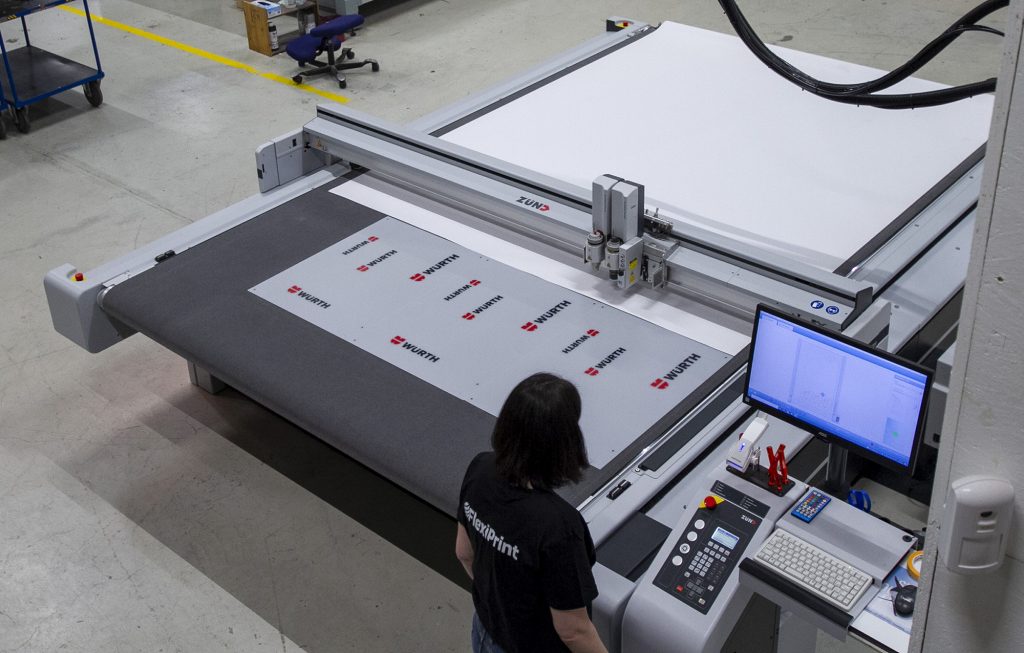
Canon automatic Zund cutting table is a recent addition, and the company also has a CNC cutting machine.

FlexiPrint is able to offer a wide variety of applications: these are for gaming enthusiasts, printed on the Arizona and cut on the CNC machine


